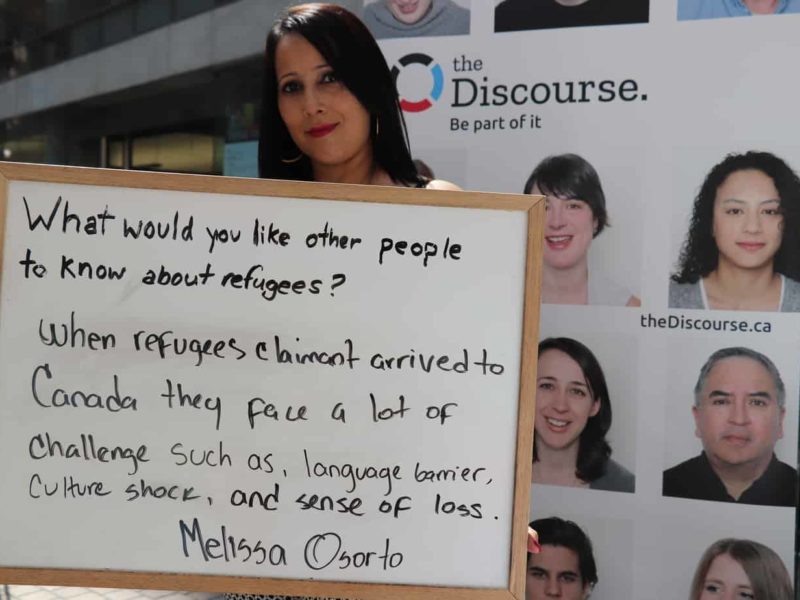
Just nine per cent of the plastic that has ever been thrown away has been recycled. Sixty per cent of the plastic produced around the world by 2015 — weighing a whopping 4.9 billion tonnes — has ended up in landfills or in the environment.
With more than 5.25 trillion pieces of plastic in the world’s oceans, the scale of plastic pollution is overwhelming. But it can also be traced back to each one of us. Most products we use, down to our underwear, typically contain some form of plastic.
Even if you don’t live near a major body of water, here are 10 things you can consider doing if you’re concerned about plastic polluting the oceans:
1. Recycle, repair and reuse
If you’re reading this, you likely already recycle, but a key part of reducing plastic pollution is reusing what’s already out there so that less new plastic — that could end up in the environment — needs to be produced.
You can also repair broken plastic items and buy others you need second-hand. If you need some help, you could look up or establish a repair cafe or fix-it group like ones that have popped up in Vancouver, Toronto and Montreal.
2. Cut back on single-use plastic
Single-use plastics account for about half of the plastics produced each year. Carrying around a reusable water bottle, saying no to plastic straws, using a reusable shopping bag and bringing your own containers to restaurants for take-out are just a few of the ways you can cut back. Here’s a list of 96 more. If you need a push, you could try a short-term challenge like Plastic Free July.
3. Shop at a zero waste store
You can also avoid items packaged in plastic you don’t need by buying in bulk, choosing versions of products with less packaging or taking your own containers to one of a number of zero waste stores across Canada.
4. Filter out microplastic from your laundry
Many everyday products, including clothes and toiletries, contain microplastics, which are small pieces of plastic less than five millimetres long. One load of laundry can send hundreds of thousands of microplastic fibres through the sewer system and into the nearest river, lake or ocean, where a fish might mistake them for food. Avoiding synthetic clothes and washing them less frequently can help to reduce the volume of fibres from your laundry.
You can also use products, such as this microfibre-catching ball, this washing machine filter and this filtering bag, to reduce how many microplastic fibres your clothes send into the world. Washing your clothes in cold water and and using liquid laundry soap also helps, according to the Plastic Pollution Coalition.
5. Avoid microbeads
Various toiletries, health and beauty products contain small plastic microbeads that wash down the drain when you use them. Canada has banned the sale of toiletries containing microbeads starting July 1, 2018. Until then, you can avoid microbeads by reading the labels of your products and making sure they don’t contain “polyethylene” or “polypropylene.”
6. Make your own cleaning products
Avoiding store-bought cleaning products by making your own from natural cleansers like vinegar and baking soda is another way to cut back on plastic packaging. You’ll also help the environment by reducing the chemicals you send down the drain.
7. Clean up the beach
Volunteers across Canada play a critical role in cleaning up the pollution that’s already out there and washing up on Canada’s shores (my investigation found the government has yet to develop a domestic policy on this). You can help by picking up litter you see on the beach or joining cleanup events organized by groups like the Great Canadian Shoreline Cleanup, the Surfrider Foundation and the Ocean Legacy Foundation.
8. Talk to your elected officials
Tell your elected officials about your concerns and what you want them to do about them. Some Canadians, like those who signed this petition calling for the federal government to develop a national strategy to tackle plastic pollution, already have. Canadians have also asked their municipal officials to clamp down on plastics with policies like plastic bag bans.
Ultimately, moving to a circular economy, which centres on products that can be reused, remade and recycled, requires changing national and international regulations on industrial manufacturing, says Calvin Sandborn, legal director of the Environmental Law Centre at the University of Victoria.
9. Tell businesses what you want
Individual actions can help, but businesses are responsible for a large amount of plastic production and use, and influence how much plastic individuals consume. Pressure from customers may nudge them to change how they work.
10. Join a relevant community or campaign
Concerned citizens across Canada are tackling this issue with efforts like campaigns against plastic straws from Tofino to Thunder Bay. Facebook groups like Zero Waste Vancouver and Zero Waste Toronto bring together individuals who share tips and tricks on how to cut back on plastics.
The Discourse does not endorse any particular groups listed; other groups and initiatives may be available or preferable in your location.
[factbox]
What should Canada do about plastic pollution?
I’d like to hear your thoughts after you’ve read my stories on the plastic washing up on Canada’s shores. Do you think you’ll change how you use plastic? What is the government’s responsibility? How else can Canadians solve this problem? Are there follow-up questions you’d like me to explore or solutions I should cover?
I’ll also use what comes up in this discussion to inform follow-up stories. Post your contributions here.
[/factbox]



